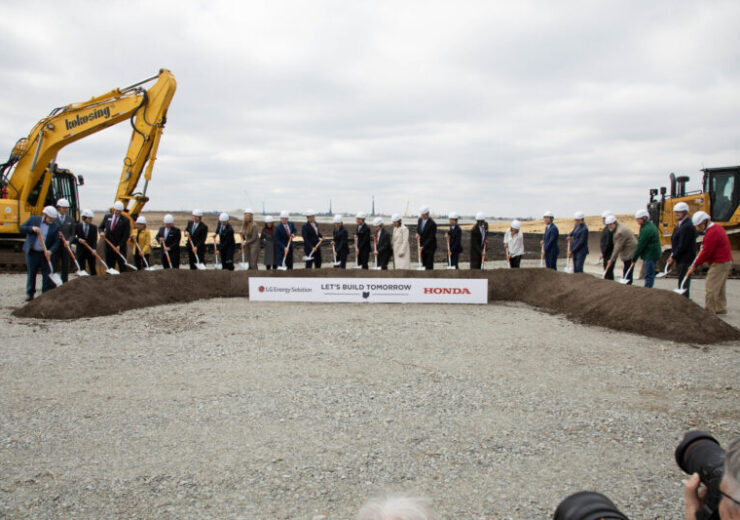To be located nearly 64.4km southwest of Columbus in Fayette County, near Jeffersonville, the new facility is expected to be completed by the end of 2024 and begin mass production of pouch-type lithium-ion battery cells by the end of 2025

LG Energy Solution and Honda Motor break ground on their EV battery plant in Ohio. (Credit: Honda Motor Co., Ltd.)
South Korean battery manufacturer LG Energy Solution (LGES) and Japan’s Honda Motor have broken ground on their $4.4bn electric vehicle (EV) battery manufacturing plant in Ohio, US.
The battery manufacturing plant is being built in Fayette County, near Jeffersonville, and will have a size of more than two million square feet.
LG Energy Solution and Honda Motor have committed an initial investment of $3.5bn in the battery plant, which is expected to generate 2,200 jobs.
To be located nearly 64.4km southwest of Columbus, the new facility is expected to be completed by the end of 2024.
The JV plant is anticipated to have an annual production capacity of nearly 40GWh.
Tentatively named L-H Battery, the JV was officially established by the companies in January 2023.
The JV battery plant will manufacture lithium-ion batteries using advanced technology to support Honda Motor’s goal of developing battery-EVs in North America, said the automotive company.
The mass production of pouch-type lithium-ion battery cells at the plant is anticipated to commence by the end of 2025.
L-H Battery CEO Robert Lee said: “LG Energy Solution is the leading battery manufacturer globally and is investing aggressively to meet demand for electrification.
“We are excited to embark on this partnership with Honda, a leader in the global auto industry with a reputation for quality and reliability.
“If we harness these strengths, I have no doubt our joint venture will be the most successful battery plant in the world, and we look forward to being a part of this massive transformation toward sustainability.”
Both companies reached an agreement in August 2022 to establish the JV, of which 51% is owned by the battery manufacturing firm and the remaining 49% by the automotive company.


